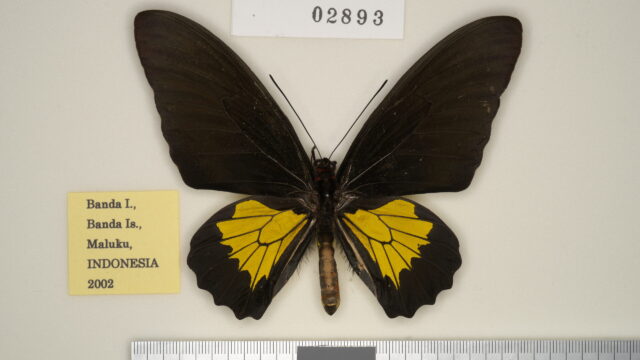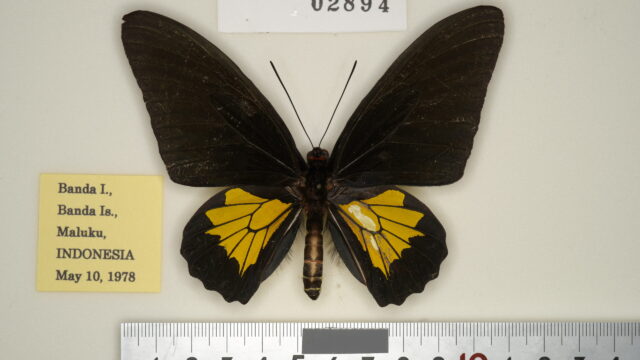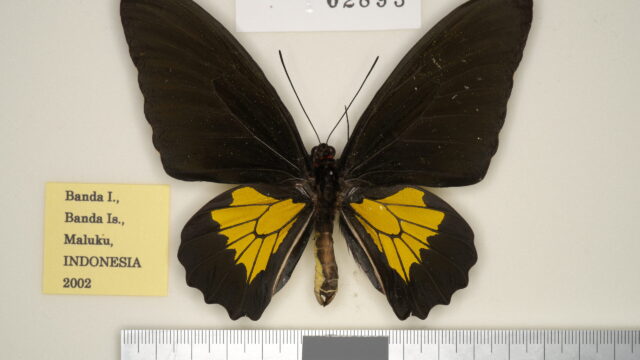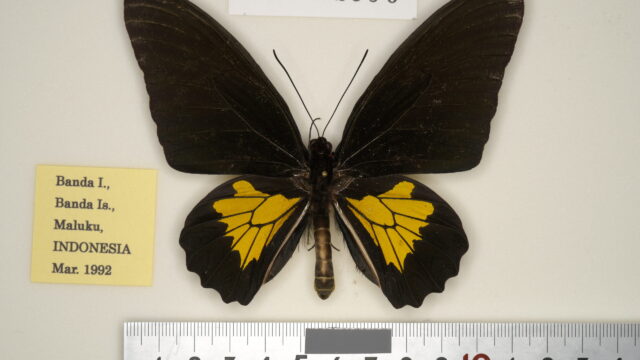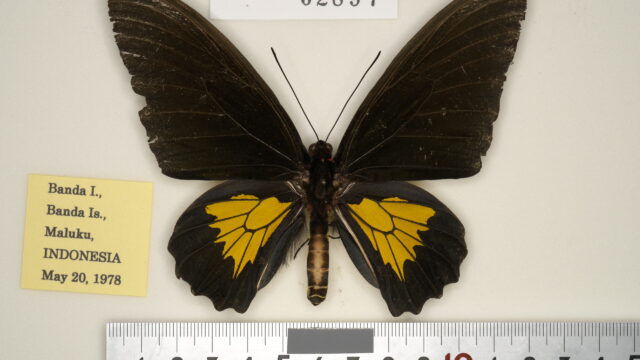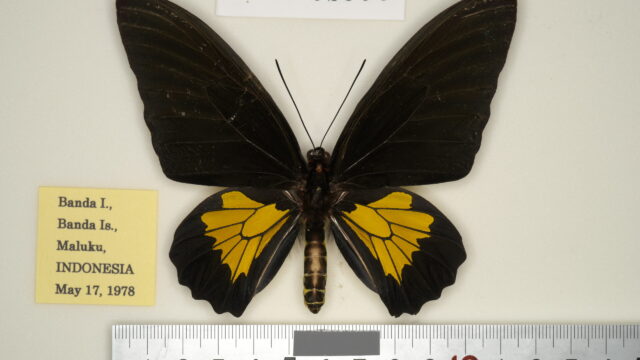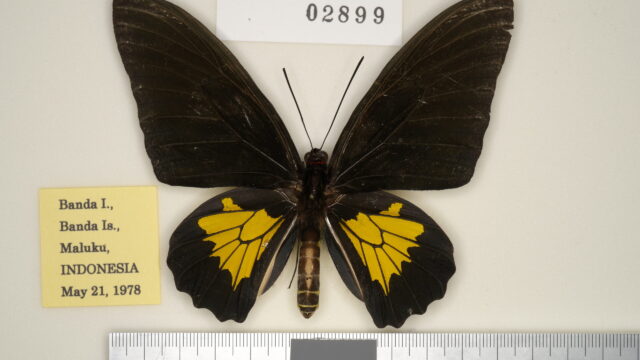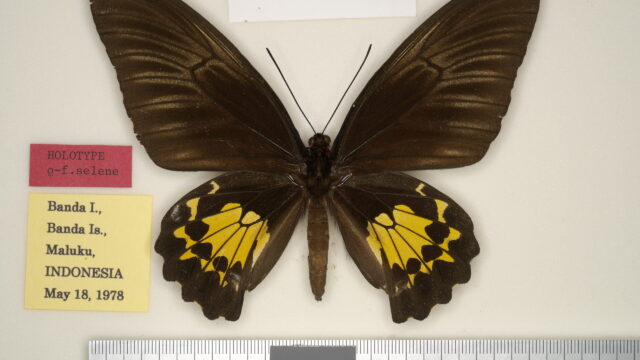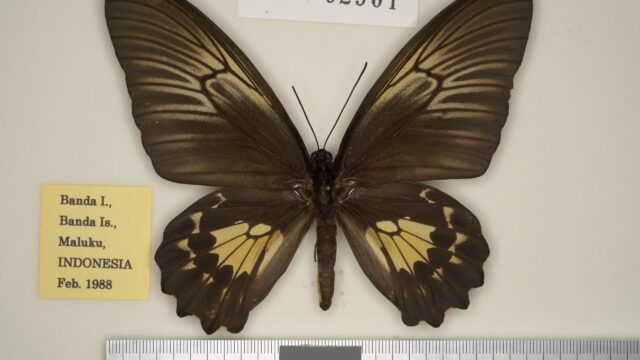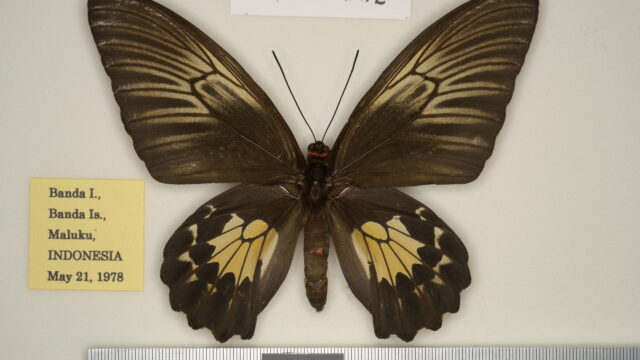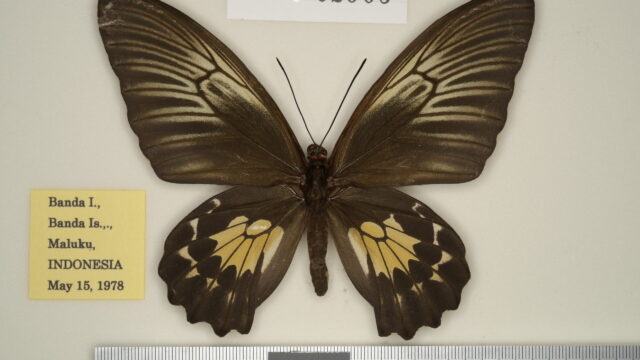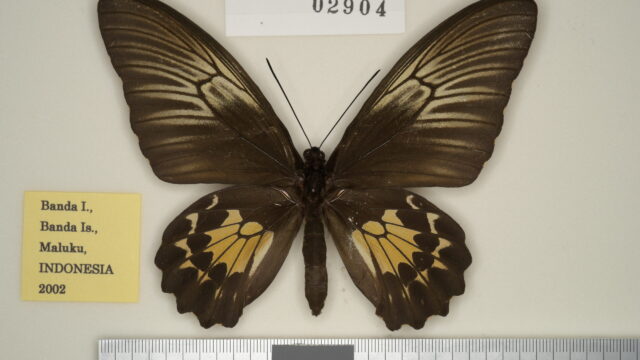4. Ssp. bandensis Pagenstecher, 190424) [♂, ♀] (♀: 2 forms)
(Distribution) [Map 141]
INDONESIA [Maluku] Banda Islands (Banda Is.).
(Episodes of discovery and original description)
The first description of the Banda Islands species was given by Rothschild (1895). Based on a single ♂ collected by Doherty, he stated that the Banda Islands species was no different from the original subspecies. Later, Fruhstorfer (1904), in his original description of another subspecies, hanno, from the Goram Islands, equated it with subspecies hanno, although he left some doubt. In the same year, Pagenstecher, on the basis of several pairs of specimens in his collection (the number of individuals is unknown), listed several characteristics and officially declared it as an independent subspecies under the name bandensis. Rothschild’s (1908) paper, which has been incorrectly cited as the original description of bandensis by many researchers and enthusiasts, was published four years later. The subspecies name bandensis is a reference to its habitat, the Banda Islands.
(Characteristics)
Limited to Banda Islands in Banda Sea about 100 Km. south of Seram Is. Because of its isolation, it is poorly surveyed, with few specimens and little information. As small as ssp. papuensis.
(Spotted pattern)
♂: The size and shape of the semi-translucent golden patches on HW, especially subcostal patch is variable in individuals. However, a characteristic of this subspecies is absence of a finger-like projection along the V6th of space 5.
♀: Two forms are known, although a transitional form is also known.
- Dark form (♀-f. selene Ohya, 198222)): FW with indistinct vein-stripes. The pale band on HW is yellow as in ssp. bouruensis, and lighter yellow on the undersurface than on the surface.
- Light form (♀-f. bandensis Pagenstecher, 190424)): FW with distinct vein-stripes and the cell-patch is M-shaped. The pale band on HW is cream yellow on surface, but milky white on underside.
